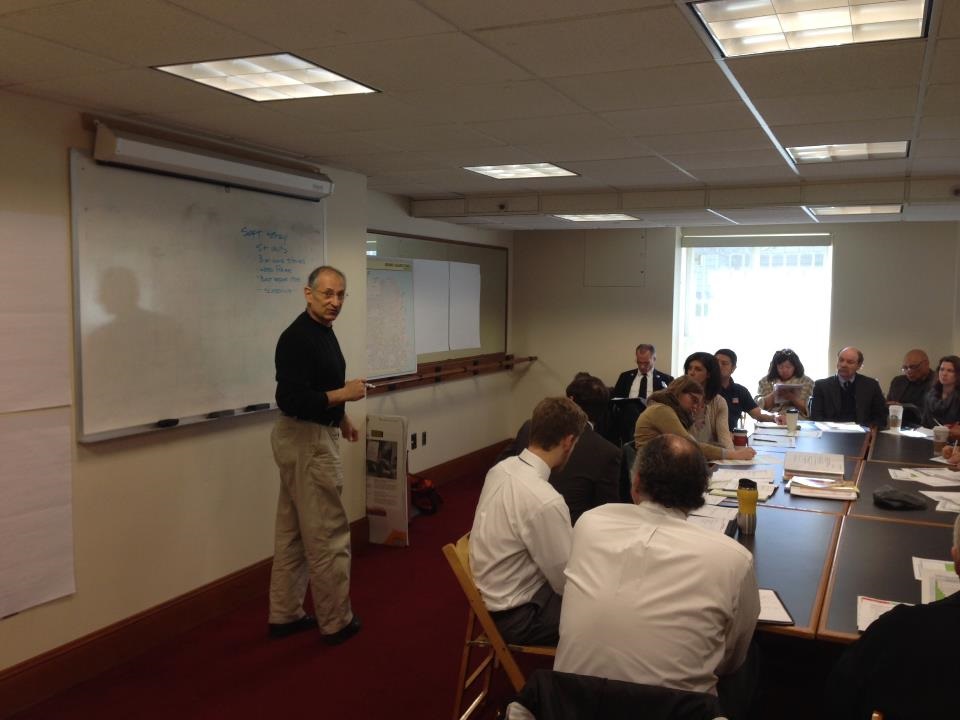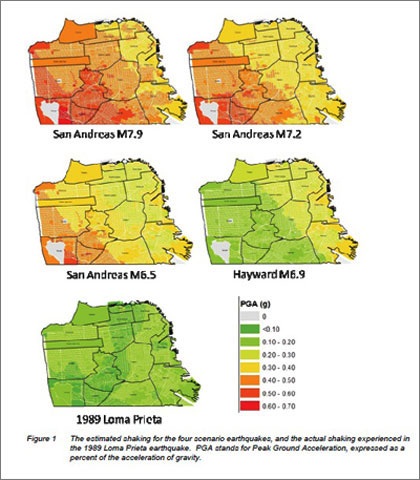CAPSS
The Full CAPSS Report
ATC 52-2 The Community Action Plan for Seismic Safety
ATC 52-1 Potential Earthquake Impacts
ATC 52-1A Potential Earthquake Impacts,Technical Documentation
ATC 52-3 Earthquake Safety for Soft-Story Buildings
ATC 52-3A Earthquake Safety for Soft-Story Buildings, Technical Documentation
ATC 52-4 Post Earthquake Repair and Retrofit Requirements
Executive Directive 10-02 Earthquake Safety Implementation Committee
ESIP Work Plan


Laurence Kornfield conducts the Winter 2013 CAPSS meeting
Program History
The Community Action Plan for Seismic Safety (CAPSS), started in theDepartment of Building Inspection beginning in 1998, was a nine-year,$1 million study to understand, describe, and mitigate the risk SanFrancisco faces to earthquakes. The report produced an extensiveanalysis of potential earthquake impacts as well as community-supported recommendations to mitigate those impacts. In December2010 Mayor Gavin Newsom formed the Earthquake SafetyImplementation Committee (ESIC) under the City Administrator’s Office,which created the Earthquake Safety Implementation Program (ESIP)in late 2011. ESIP is a thirty-year work plan and timeline implementingthe CAPSS.
The Community Action Plan for Seismic Safety (ATC 52-2)
The Earthquake Safety Implementation Program (ESIP) Work Plan
The Community Action Plan for Seismic Safety (CAPSS)
Earthquakes are in San Francisco’s future. The consequences of thosedisasters will be very different – for better or worse depending on thepolicy choices and actions the City takes now, today.
The Community Action Plan for Seismic Safety (CAPSS) project,commissioned by the City and completed by the Applied TechnologyCouncil (ATC), studied four probable earthquakes that could strike theCity and found that future earthquakes would damage manythousands of buildings to the point where they cannot be occupied.They would devastate the City’s housing stock, and could have long-term implication on the City’s affordability to middle- and low-incomeresidents, who would be displaced for years. Hundreds of people couldbe killed and thousands could be injured. The City would loseirreplaceable historic buildings and rent-controlled apartments. Theprice tag of the earthquake damage would be many billions of dollars.Property owners, the majority of whom do not carry earthquakeinsurance, would bear the brunt of these economic losses, butresidential tenants and businesses would suffer as well. Much of thedamage from future earthquakes is preventable.

Taking action before an earthquake strikes is far less costly thanrepairing damage after an earthquake, both in terms of dollars requiredand the social impacts associated with housing losses,businessclosures, and damaged property. The CAPPS report proposed severallong-term objectives to guide mitigation and priorities now:
1. Residents will be able to stay in their own homes;
2. Residents will quickly have access to important privately-run community services;
3. No building will collapse catastrophically;
4. Business and the economy will quickly return to functionality; and
5. The City’s sense of place will be preserved
The CAPSS advisory committee and a diverse group of San Franciscoresidents met over thirty times over the course of two and a half yearsto develop recommendations that San Francisco’s City governmentleaders should take to reduce the consequences of futureearthquakes.
Recommendation 1: Require the evaluation of all wood-frameresidential builds of three or more stores and five or more units, andretrofit those that are vulnerable to earthquake damage.
Recommendation 2: Inform the public of risks and ways to reducerisk.
Recommendation 3: Adopt updated code standards for seismicevaluation and retrofit of all common buildings.
Recommendation 4: Require all buildings to be evaluated for seismicrisk.
Recommendation 5: Require retrofits of vulnerable buildings.
Recommendation 6: Assist community service organizations to reachearthquake resilience.
Recommendation 7: Establish clean responsibility within Citygovernment for preparing for and reducing risk from earthquakes.
Recommendation 8: Adopt improved post-earthquake repairstandards.
Recommendation 9: Offer incentives for retrofit of buildings.
Recommendation 10: Require gas shut-off valves on select buildings.
Recommendation 11: Track evaluation and retrofits in a databasesystem.
Recommendation 12: Provide technical assistance for buildingretrofits.
Recommendation 13: Enact a façade ordinance.
Recommendation 14: Promote development and implementation ofeffective ideas on earthquake risk reduction.
Recommendation 15: Evaluate measures to reduce post-earthquakefires.
Recommendation 16: Address the hazards from damage to buildingsystems, appliances, equipment and non-structural building elements.
Recommendation 17: Periodically assess progress andimplementation of these recommendations.
This plan is a call to action to invest in the Ctiy’s future. San Franciscowill always have earthquakes in its future, but with foresight and effortthe consequences of those earthquakes can be reduces so that theCity can rebound quickly and maintain its unique character. SanFrancisco’s leaders must act now. Improving San Francisco’searthquake resilience will take persistent effort and governmentintervention over several decades. However, as the recommendedmeasures are implemented, the San Francisco community willweather earthquakes with fewer causalities and less damage, be ableto more rapidly recover economically, and preserve for futuregenerations the exciting, dynamic, culturally diverse, historic andlivable city residents enjoy today. In a word, San Francisco wouldbecome more resilient.
Laurence Kornfield’s Building San Francisco, “Home Earthquake Preparation.”
Next Steps
Please visit the ESIP program page to see how this study developedinto the thirty-year work plan the City is currently implementing.